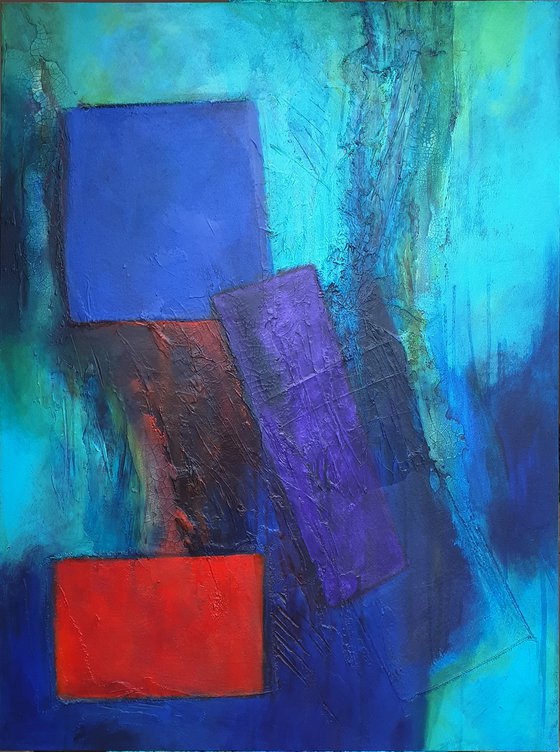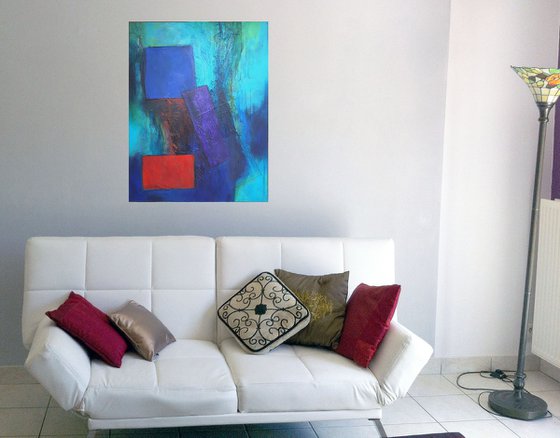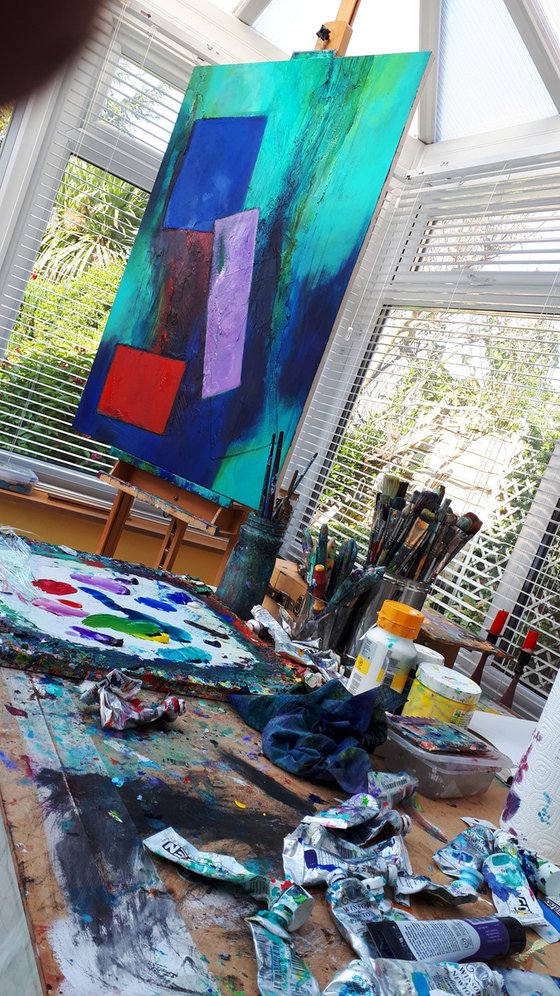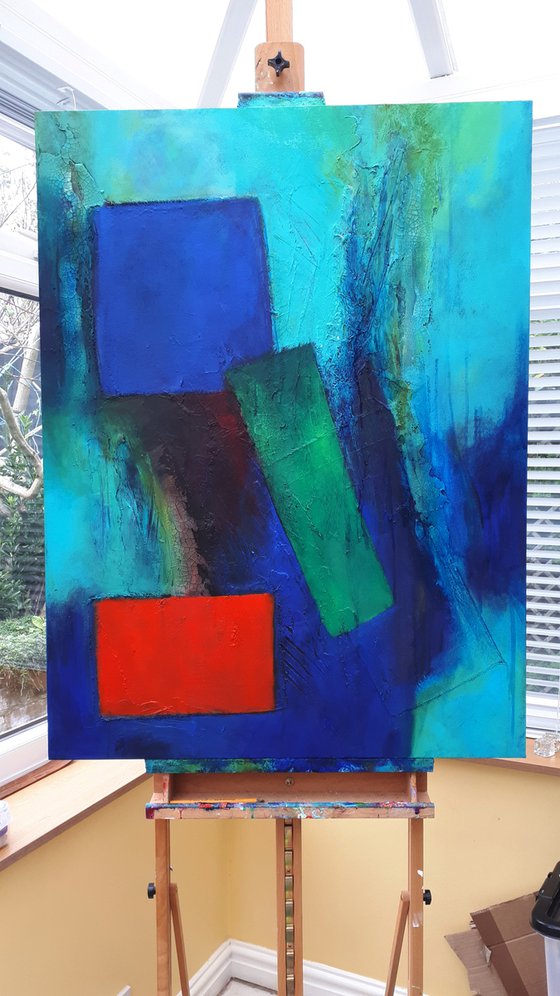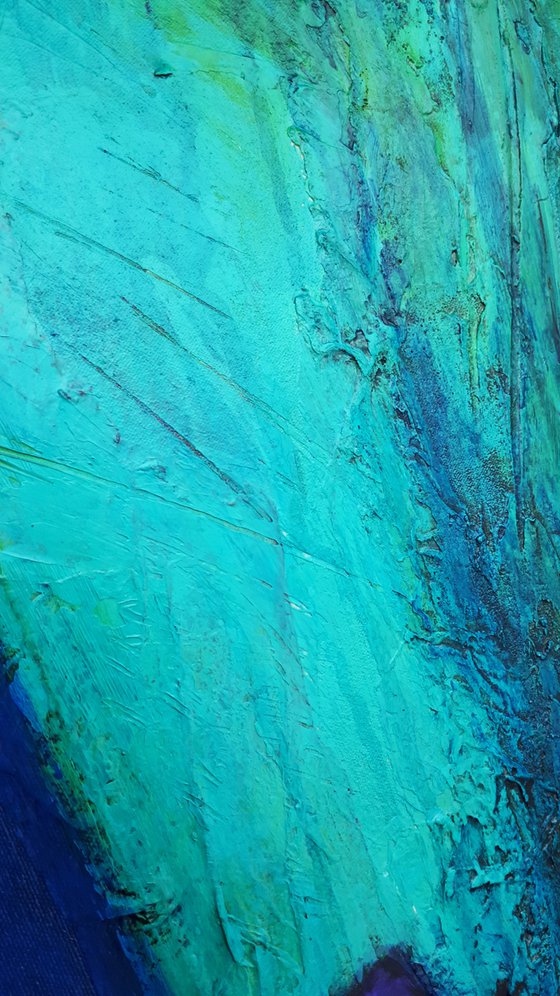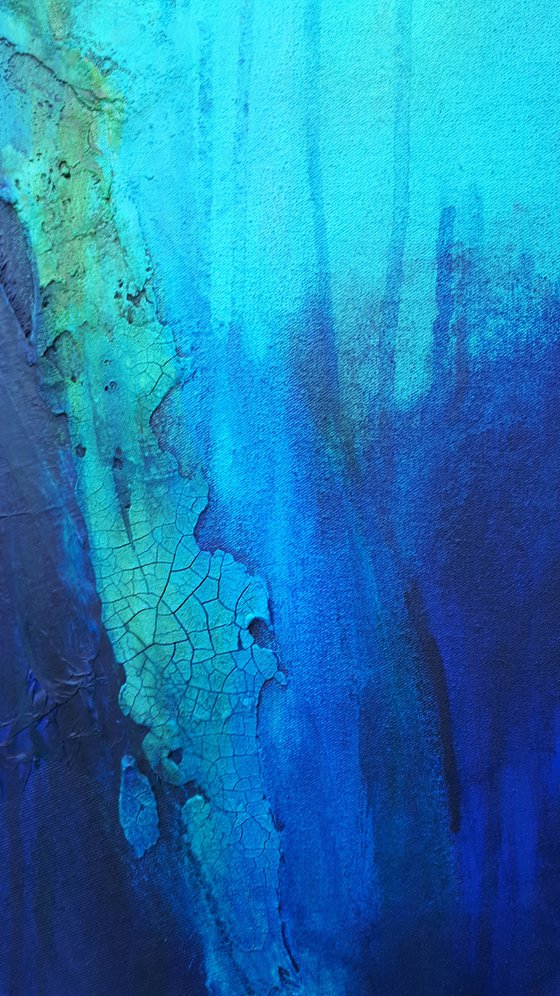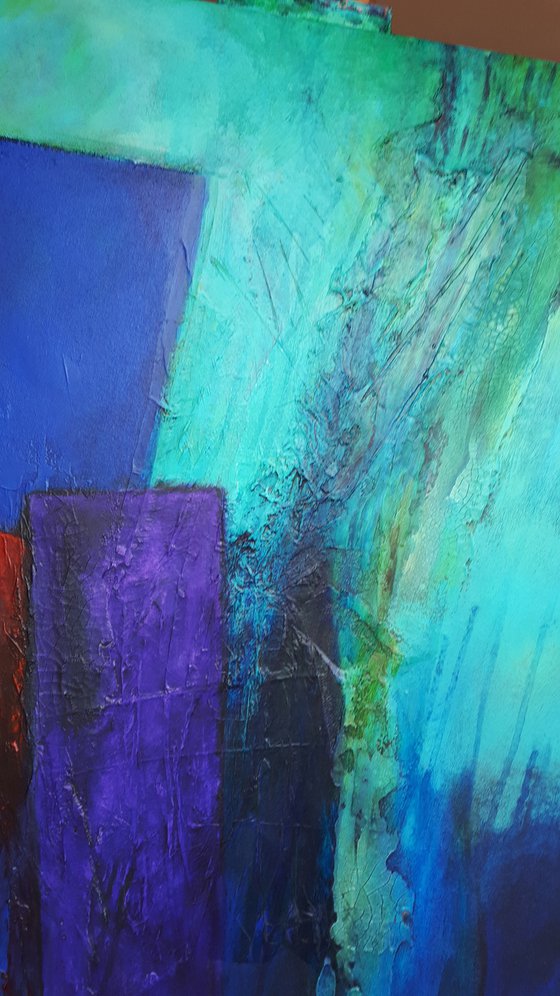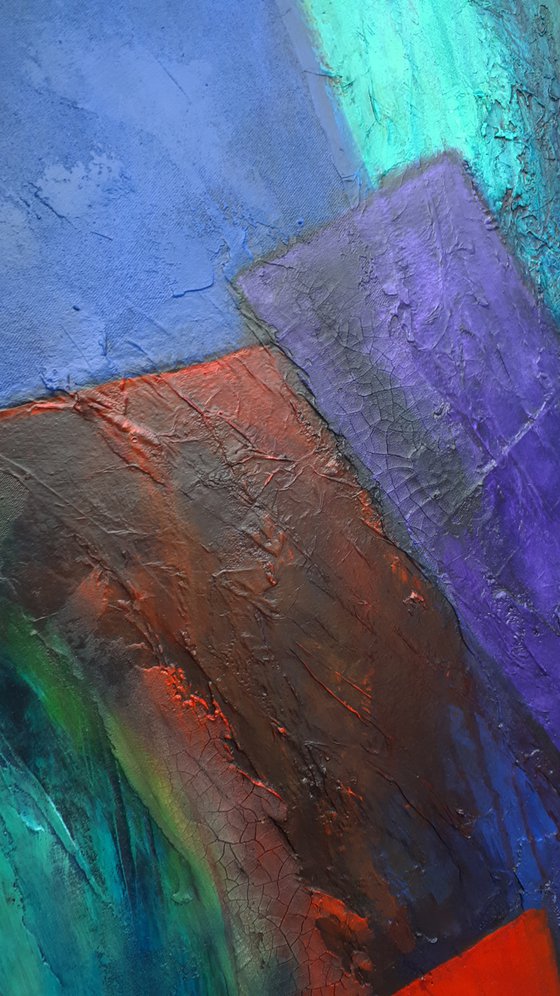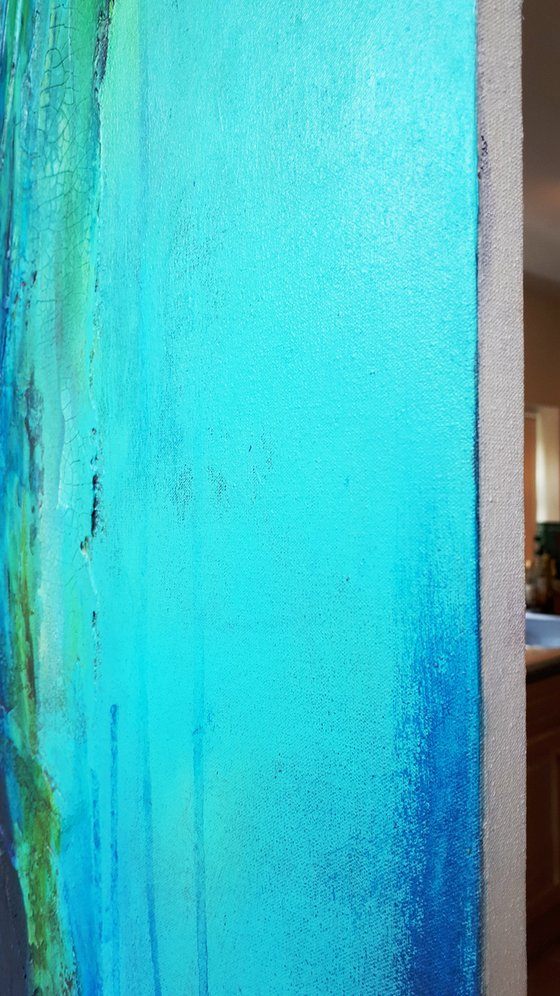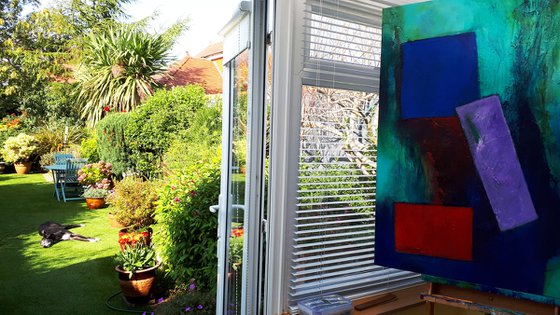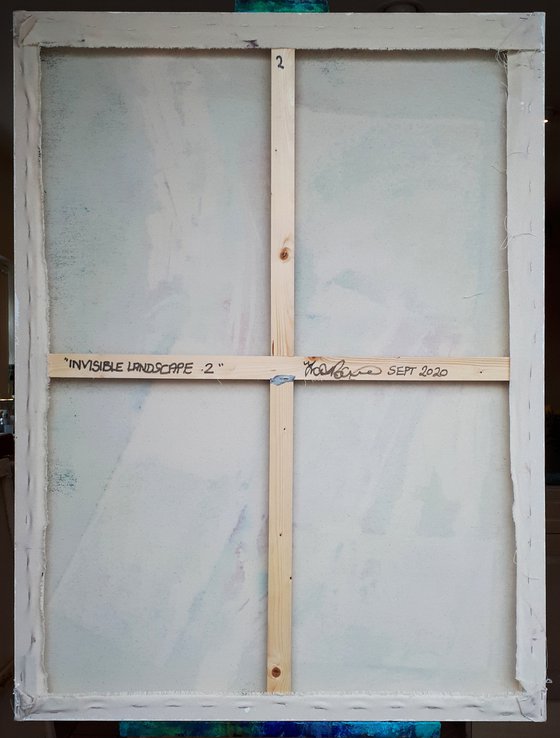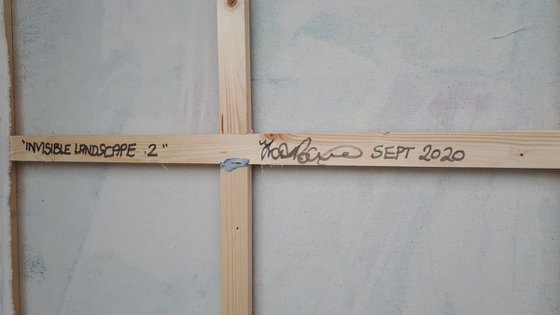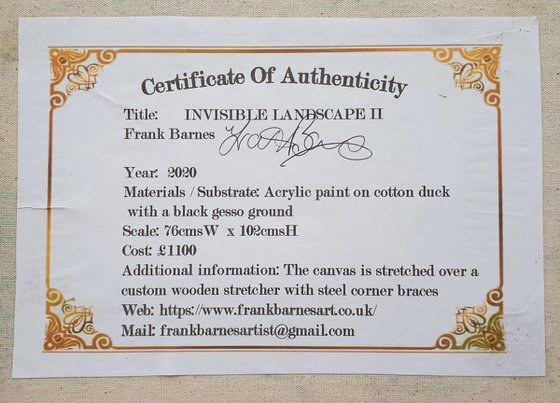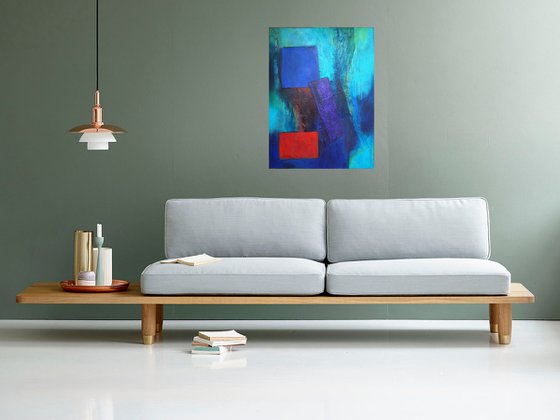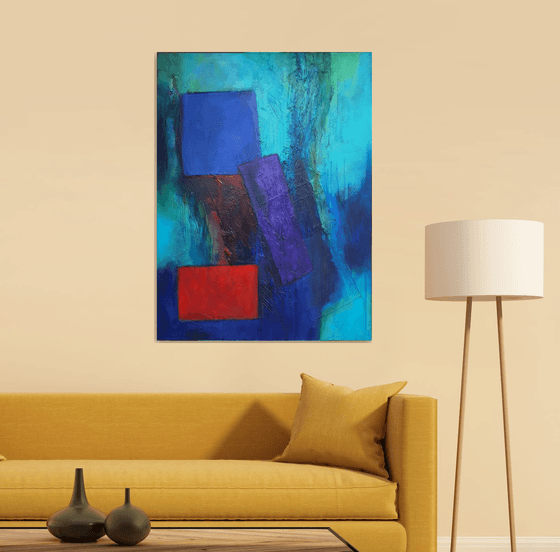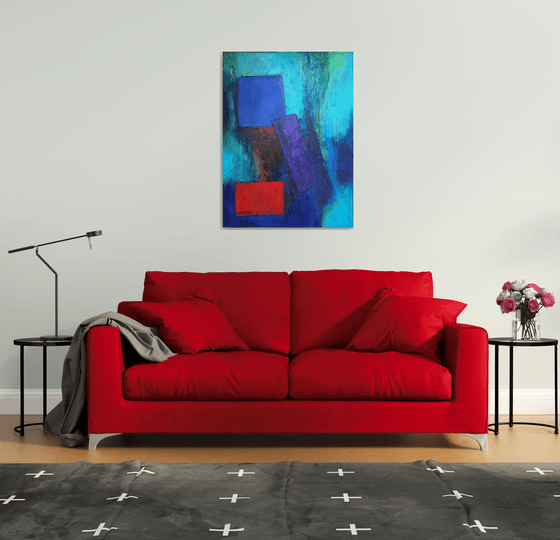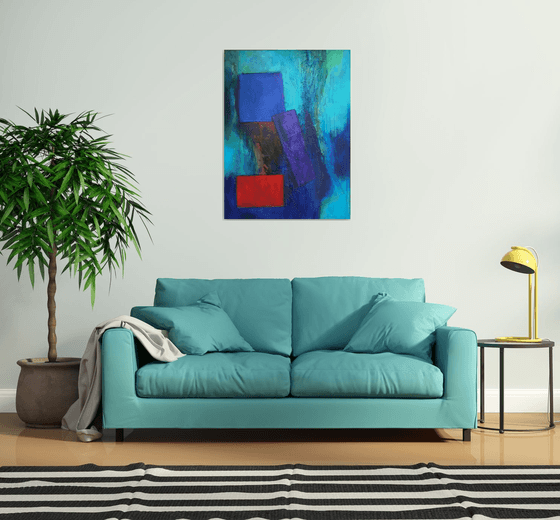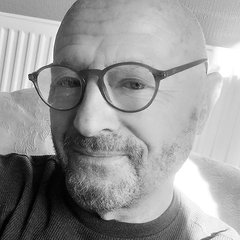- By medium
- By subject
- By budget
- Sales
- Gift cards
- Discover all art
- Artists
- Editors’ picks
- Ideas
Original artwork description:
“Invisible Landscape II” is an acrylic on cotton duck canvas painting 76cmsW x 102cmsH . The painting is part of a trilogy of works. Naming paintings is such an important part of making artwork. The titles you choose are frequently used as clues to the sources or meaning of the artwork. I often get told by interested viewers that they can see objects, spaces and sometimes figures in the work. I think that such statements are highly valued and appreciated because what a viewer brings to the artwork is their own viewpoint and what it means to them is key to their interest. Art historian James Elkins said "Seeing alters the thing that is seen and transforms the seer”. It makes you think about all the vision you have and all that you take for granted. Most of the time we see only what we want to see and our vision and understanding is limited and other elements of our existence become invisible. I am fascinated by the act of seeing and how it affects both the object seen and the one seeing. The ‘Invisible Landscape’ trilogy suggests a real landscape. Perhaps an open space.. a rural setting. I’m not a landscape painter in a literal sense but I am more comfortable walking in and looking at landscape. Most recently we visited Powys on the Welsh / English border. A beautiful lush, green landscape of rolling hills and arguably one of the least populated area of the U.K. The ‘Invisible Landscape’ trilogy reflects that environment, but then again it might have been somewhere else. I’m inspired by the modernists ie: Mark Rothko, Barbara Rae, Hans Hoffman, John Hoyland etc . I enjoy their free rein and the ambiguity of their work.
Materials used:
Acrylic paint on cotton duck over a black gesso ground
Tags:
#abstract #landscape #expressionism #art forINVISIBLE LANDSCAPE II (2020) Acrylic painting
by Frank Barnes
5 Artist Reviews
£1,100 Sold
- Acrylic painting on Canvas
- One of a kind artwork
- Size: 76 x 102 x 1.75cm (unframed) / 76 x 102cm (actual image size)
- Ready to hang
- Signed certificate of authenticity
- Style: Abstract
- Subject: Abstract and non-figurative
Do you like this artwork?
This artwork has sold, but the artist is accepting commission requests. Commissioning an artwork is easy and you get a perfectly personalised piece.
Loading
Original artwork description
“Invisible Landscape II” is an acrylic on cotton duck canvas painting 76cmsW x 102cmsH . The painting is part of a trilogy of works. Naming paintings is such an important part of making artwork. The titles you choose are frequently used as clues to the sources or meaning of the artwork. I often get told by interested viewers that they can see objects, spaces and sometimes figures in the work. I think that such statements are highly valued and appreciated because what a viewer brings to the artwork is their own viewpoint and what it means to them is key to their interest. Art historian James Elkins said "Seeing alters the thing that is seen and transforms the seer”. It makes you think about all the vision you have and all that you take for granted. Most of the time we see only what we want to see and our vision and understanding is limited and other elements of our existence become invisible. I am fascinated by the act of seeing and how it affects both the object seen and the one seeing. The ‘Invisible Landscape’ trilogy suggests a real landscape. Perhaps an open space.. a rural setting. I’m not a landscape painter in a literal sense but I am more comfortable walking in and looking at landscape. Most recently we visited Powys on the Welsh / English border. A beautiful lush, green landscape of rolling hills and arguably one of the least populated area of the U.K. The ‘Invisible Landscape’ trilogy reflects that environment, but then again it might have been somewhere else. I’m inspired by the modernists ie: Mark Rothko, Barbara Rae, Hans Hoffman, John Hoyland etc . I enjoy their free rein and the ambiguity of their work.
Materials used:
Acrylic paint on cotton duck over a black gesso ground
Tags:
#abstract #landscape #expressionism #art for14 day money back guaranteeLearn more
